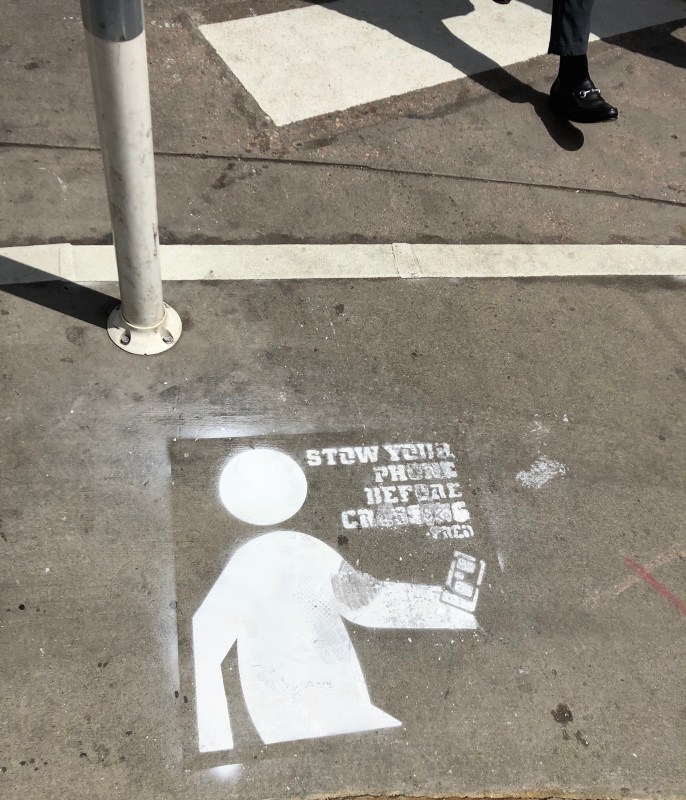CDOT Preaches Imagined Public Safety Crisis of “Distract Walking” on Denver Street Corners

Every so often the Colorado Department of Transportation decides it’s time to use public money to shame people walking in the name of street safety. The latest iteration of this ineffective tradition comes in the form of 100 chalk-painted intersections bearing a glow-in-the-dark image of the walk signal guy telling pedestrians to “stow your phone before crossing.”
It’s supposed to, ostensibly, make people safer. It won’t, because “distracted walking” is not a genuine threat to public safety, while distracted driving is a clear and present danger.
Drivers distracted by phones and other things caused 40 crashes a day throughout the state in 2016, with 97 resulting in deaths and life-changing injuries, according to CDOT. The department says it does not have data on crashes caused by people walking and using their phones.
With its latest stunt, which cost about $18,000, CDOT has latched on to a troubling national trend. Elected officials in Honolulu elevated the imaginary plight of distracted walking to the level of legal banishment, which has spawned copycats at the local government level.
Streetsblog USA’s Angie Schmitt reports:
Walking is so deadly in America because that’s how we’ve arranged our cities and towns. Streets are designed to move motor vehicles at lethal speeds without consideration for pedestrian safety, and our scattered development patterns increase driving and car traffic, exposing people on foot to greater risk.
Instead of reforming our transportation and land use policies to make walking safer, however, American cities are doubling down on a dysfunctional system by blaming pedestrians for their own deaths.
Honolulu set the precedent earlier this summer by passing a law that forbids looking at an electronic device while walking across an intersection, even though motorists are still permitted to look at dash-mounted devices while driving through intersections. The law won’t make people safer (data doesn’t support the idea that “distracted walking” is a significant factor in rising pedestrian fatalities), but will lend itself to selective enforcement and racial profiling.
To CDOT’s credit, the campaign is part of a larger one that calls out drivers. The roads department purchased billboards, TV and radio spots, social media ads, and print ads aimed at people who drive distracted. One is actually pretty moving:
Whether CDOT’s yearly “education” campaigns do anything to curb traffic deaths is suspect. There’s no data to indicate they do — the department admits it has no measuring stick — and traffic deaths continue to rise on Colorado roads.
On the other hand, CDOT’s engineers know what would save lives: Slower driving speeds wrought from more crosswalks, slimmer streets, curb extensions and other traffic calming tools on state highways that usher speeding cars through the city, like Federal Boulevard.
Street designs that accommodate walking, not gratuitous victim-blaming, will make Coloradans safer.

An earlier version of this article said the images were spray-painted. They were made with chalk paint.


